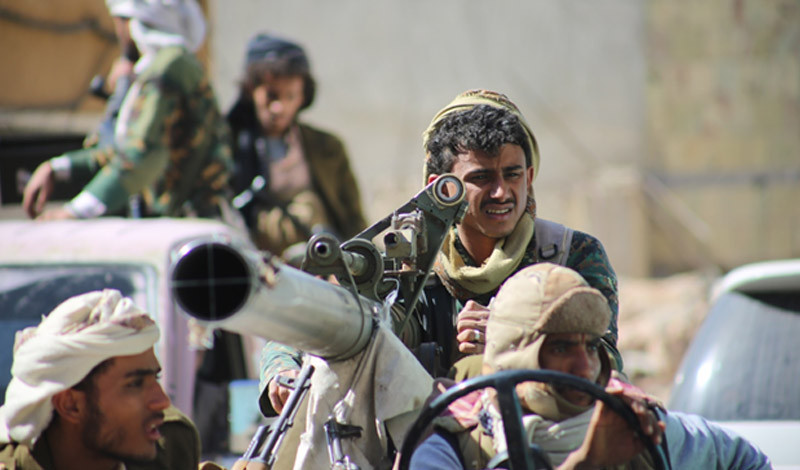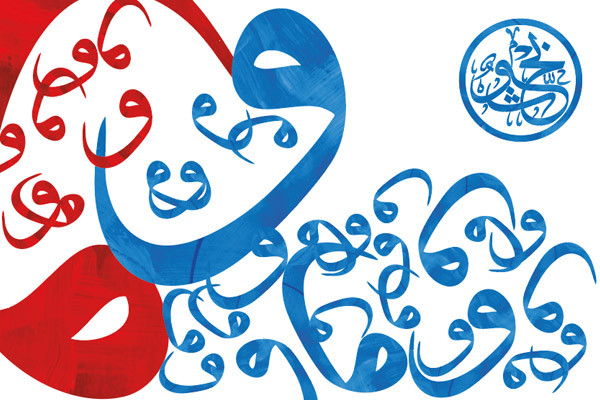Are the Houthis controlling Sana`a?
The political and military status inside Yemen is changing rapidly. This feature has become one main characteristic of the Arab Spring countries, which greatly undermines the ability to predict and hinder the stabilization operations within those areas. The party who was an ally yesterday could become an enemy tomorrow. Which means that the system of alliances within this region is not the usual one that is known around the world, especially alliances between the local forces, where all parties without exception aim to achieve a quick victory regardless of the victims and losses left behind. So, it should not be surprising if the Houthis opens a new page for new alliances in Yemen with parties that were their enemy yesterday. The main objective is to control power, even if the land that embraces their authorities is filled with the bodies of the victims and the rubble of the rundown buildings.

- by Dr. Haifa AlMaashi ,
- Thursday, 7th December, 2017
After the killing of former President Ali Saleh, the Houthis movement asserted that it is the real force within Sana'a and its suburbs, which extends to Arhab, Bani Hashish, Al Hima, Bilad Al Russ, Bani Matar, Sanhan, Hamdan, and up to Khawlan. This means that the coalition, including the Yemeni legitimate government, is now facing a single enemy after the fall of the General People's Congress.
The failure of former president Saleh’s party has preventing the swing of the balance scale among the two parties. This means that the Houthis have taken control of the situation inside Sanaa and also means the absence of any obstacles that may prevent them from applying their political, social and religious agendas. But do the Houthis have a popular incubator inside Sanaa to pass such agendas?
The huge crowds that gathered to salute Abed- AlMalek Al Houthi in the north of Sana'a after Saleh's death for eliminating the treason and protecting the country from the aggression did not decrease in number, but in the contrary they may have increased in numbers after a large percentage of Salah’s loyalists became pro-Houthi and change the name of the leader of Sanaa from the title Al Zaeem (the leader) that was connected with Ali Salah to “Al Saied” Abdul-Malik al-Houthi. The latter is not only a political leader but more importantly, a religious leader representing the ideological orientation of the Houthis, which is the core of the Twelfth Imamate and is one of Iran proxies in the region alongside Hezbollah in Lebanon, militia Al-Hashed al-Sha’bi in Iraq and the Syrian regime.
No one can argue that the Houthis are an ally of Iran within Yemen. Houthis planted their first seed in the city of Qom in Iran when Badr al-Din al-Houthi, the founder of the religious movement, received the tenets of the twelfth imams doctrine and gradually transferred it to Sa'ada. Then Hussein Badr al-Din al-Houthis put the political and military bases of the movement through establishing political organizations and a military militia. This has contributed greatly in building a state within a state even if the borders of this preliminary state were initially identified within Saada itself. In fact, Hussein Badr al-Din al-Houthis formed a model of political rule, which contains an organizational structure at the political and military levels, starting with the leader, then the higher leaders represented in the political council, then the middle leaders represented by the top field leaders, currently represented by Abu Ali Al Hakem and Abdel Khaliq AL Houthis. Then the lower level leaders, who are distributed in the fighting fronts and receiving directions from the top and ends with the followers.
It is a hierarchical organization that largely mimics the divisions of the Shiite organizations in the region, most notably the organization of Hezbollah, although the latter, since its establishment in 1982, has been able through its structure to bring together all the affairs of society through its various social categories.
Within the scope of the Houthi movement orders come only from the top and are implemented immediately by different leaders (middle and lower commanders). There is no disintegration of leadership or direction. The Houthis are characterized by a strong cohesion dominated by dogmatic orientation more than anything else. The instructions and orders issued by the Supreme Command inside Yemen determine the political and military plans and reflect the understanding of the Yemeni reality. This particularity of the Yemen reality is not clear in its detail and dimensions for the Houthis’ allies in the region or the main ally in Tehran, so it is difficult for the Houthis to be guided by the allies within the Yemeni interior, as these allies are largely ignorant of it. But the allies may direct the Houthi outside Yemen, especially in identifying the destination of ballistic missiles or guiding the Houthis movements within the Red Sea.
On both the internal and external affairs, Houthis allies work to provide support for the implementation of these directions where they are carried out in an integrated manner either by providing material, information, or logistic assistance such as training and rehabilitation. In addition to providing military techniques and equipment, experts and consultants. Which means that the Houthis enjoy independency with regard to their political and military decisions on the local scale, which was evident in many of the past events during the Yemeni conflict. For example, Iran did not support them in the military approach to occupy the South, a decision that weakened the Houthis militarily, and they are still suffering of its repercussions. Also, Iran was not entirely with them in their mysterious alliance with Ali Saleh, which ended tragically with the killing of Saleh himself with many soldiers and civilians victims from both sides.
So the Houthis' decisions with regard to the directions and plans after Saleh's death inside Sanaa specifically and in the battlefields fronts inside Yemen will be their own decisions, but the multi- Shiite support will continue as long as the movement is alive and unbreakable. This may mean tightening the Shiite square between Sana'a and the Shiite centers in the region, which is part of an initial and incomplete coalition between state and non-state actors. But with the Houthis dominating Sana'a and the possible political changes of announcing a new government, Shiite coalition is likely to be renewed at the level of state-actors and that will include the Houthis as a state-actor. This will make the Houthis movement claim to possess the status of legitimate government and lead to escalation of tension within Yemen. Especially if the Houthis coming state will be recognized by external parties who may deal with it as an official body.
The Houthi status after Saleh's death will not be the previous status that represented a partnership between the General People's Congress and the Houthis, which means reconsidering the components of the government and the political council.
Former president Saleh's rule for decades, nearly forty years, was based on the distribution of interests and satisfying many parties whether politically or financially including tribal and religious symbols, whether Sunni or Zaidi. But, he had collided after unification with the southern reality, which rejected the rule of the single leader in addition to the collision of economic interests to a large extent. Saleh continued to use his own policy of political and financial satisfaction with many of the southern leaders to overcome the clash, although this policy did not succeed in the long term to confirm stability in Yemen. Also, this policy has lost its attractiveness within the northern governorates after the outbreak of the popular uprising of 2011, which formed an unprecedented popular movement in those areas. This movement was used by various political forces, headed by the Islah Party to achieve partisan interests. All this led to the deterioration of the situation in Yemen in general.
The return to the sole rule in Sanaa by the Houthis, may differ in its approach and orientations from the previous ones, but the people themselves have not changed. The people are the winning card to save Yemen from an upcoming religious dictatorship led by the Houthis.

Dr. Haifa AlMaashi
Director of the Geo-strategic Studies Division (former)
Read More
Areas of Expertise
- Policy analysis
- Media writing
- Qualitative research
- lecturing
Education
- PHD in Mass Communication, University of Cairo, Faculty of Mass Communication, Egypt. 2004
- Master’s in journalism, University of Colorado Faculty of Journalism, Boulder, USA.1990
- Bachelor of Political Science, University of Kuwait Faculty of Economic and Political Science, Kuwait. 1989
Bio
Haifa Ahmad Al Maashi works as the director of geo-strategic studies division at Dubai Consultancy Research and media Center. She obtains a PhD in journalism from the University of Cairo- Faculty of media (2004) First class honors, has a master`s degree in journalism from the University of Colorado - Boulder in the United States (1990) and a BA in Political Science from the University of Kuwait 1989. She is specializing in the field of political media and has worked as an assistant professor at the University of Aden 1991-2010,( Journalism and Media department). Has several published lectures in the field of media and political development, the role of media in social change, communication theories and the new media (2004). Also has articles published in several newspapers and websites. Her main concern focuses on the detection and analysis of political crises around the world and examine its implications on the reality of the region politically and economically.

